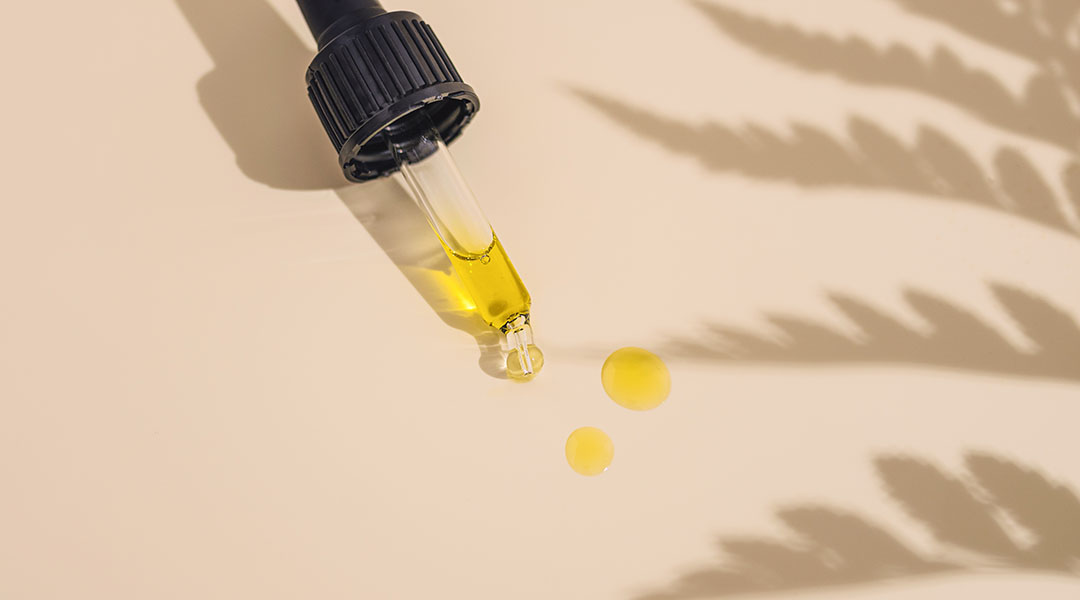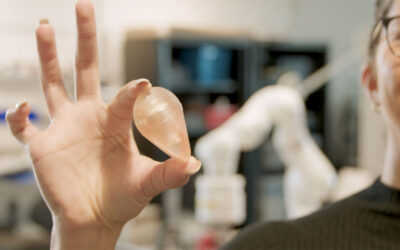Cannabis, commonly known as marijuana, has a long history of medicinal and recreational use. This plant contains over 100 substances with bioactive properties called cannabinoids, from which the most well-known are delta-9-tetrahydrocannabinol (THC) and cannabidiol (CBD). While THC is a psychoactive molecule that alters brain function, producing changes in perception, mood, cognition, or behavior, CBD does not.
Our body also produces its own cannabinoids — called endocannabinoids — and has an entire endocannabinoid system which plays an important role in regulating various physiological processes, such as relieving pain and controlling appetite, stress, and inflammation. External cannabinoids, like CBD, interact with our endogenous endocannabinoid system, modifying physiological function.
How does CBD affect brain health?
Taking advantage of cannabis’ properties, it has been used medicinally to treat different conditions, including some neurologic disorders. The first CBD-based medicine was approved by the FDA in 2018 to treat certain types of epilepsy.
Despite its benefits, CBD can cause mild side effects, such as dizziness and drowsiness, with some studies suggesting it can be harmful to the brain, causing neuron death. However, there are more cell types than just neurons in the brain. Astrocytes, for one, are a type of supportive cell in the nervous system that protects neurons from harm.
To better understand how CBD impacts neuron health in the brain and the risks associated with consumption, a group of scientists from the Korea Advanced Institute of Science & Technology (KAIST) in Daejeon, South Korea established a unique experimental system to explore how astrocytes might protect neurons from CBD neurotoxicity. Their results were recently published in an article in Advanced Biology.
“We previously found that high doses of CBD could harm neurons,” said Insung Choi, professor of Chemistry and of Bio and Brain Engineering, and Director of the Center for Cell-Encapsulation Research in the KAIST. “However, this study has revealed that astrocytes can actually mitigate this harmful effect. This means there is less reason to be concerned about CBD causing damage to neurons.”
The findings of this study could potentially pave the way for the development of more CBD-based medications for neurological conditions, alleviating concerns about adverse effects.
A helpful cellular “sandwich”
In the lab, cells are normally grown or cultured in flat plates. When more than one type of cell is cultured together in a co-culture, every cell is mixed together on the same plate, providing a platform that allows them to interact physically with each other to study their behaviors.
Choi and the team wanted to determine if astrocytes were releasing molecules that might protect neurons against the effects of CBD. While the team needed to study how both cell types interact in this type of environment, to avoid unnecessary interference, they needed to grow each cell type independently. To do this, they had to design a completely new co-culture method.
Astrocytes and neurons were grown independently in small, circular glasses located at the bottom of culture plates. The glasses where astrocytes were grown contained spacers on their borders such that when placed face-to-face over the plates with neurons, this helped avoid physical contact. The team refer to this arrangement as a “sandwich” co-culture.
“The sandwich format enables us to study the effects of substances released by both astrocytes and neurons in a confined area,” said Choi. “This means we can investigate the impact of soluble compounds without direct contact between the cells.”

As part of the control group, the scientists employed a neuron/neuron sandwich arrangement, and upon treatment with CBD, they observed neuron cell death in a concentration-dependent manner. However, when CBD was applied to a neuron/astrocyte sandwich configuration, neurotoxicity was not observed at low CBD concentrations (15 μm).
Choi and the team also found that at a high CBD dose (30 μm), 10% of neurons in the co-culture died, while in the neuron/neuron sandwich, almost 50% of the neurons died. The researchers suggest that the presence of astrocytes act as a protective mechanism, attenuating the detrimental impact of CBD on the neurons.
To investigate how CBD kills neurons, the scientists performed a technique called calcium imaging that measures calcium concentrations inside the cell — an indicator of cell death or apoptosis.
Choi and the team observed that neurons treated with CBD had high intracellular calcium concentration, but when astrocytes were part of the sandwich, the percentage of neurons that showed high calcium concentration was far lower. The authors speculate that the astrocytes rescued neurons from CBD toxicity and death by regulating calcium mechanisms inside the cells.
Besides studying neuronal viability, Choi and the team also investigated the cells’ structural and morphological changes. A neuron is composed of a cell body and thin, elongated projections that extend from it called neurites. When exposed to CBD, the neuron/neuron sandwich showed shorter neurites, indicating issues with cell growth, and “death cues” called apoptotic bodies, while the neurons in the co-culture with astrocytes did not show signs of damage.
“We observed that the liquid in which astrocytes were grown, along with CBD, helps neurons develop faster to some extent,” said Choi. “This suggests the potential of a combination of CBD and the substances secreted by astrocytes in response to CBD as a new therapeutic approach for brain injuries.”
A clinical context for CBD
This research carries significant implications for CBD as a potential therapeutic agent for neurological disorders by providing crucial information that could aid in the design and optimization of CBD-based treatments.
However, neurons from different brain structures could react in different ways. While Choi’s group performed their experiments with mouse neurons from an area in the brain involved in memory, more studies will be needed to understand CBD’s effects in other regions.
“We chose hippocampal neurons because they play a crucial role in memory and serve as a potentially suitable model cell for studying Alzheimer’s disease,” said Choi. “However, as part of our research plan, we also intend to study the effects of CBD on cortical neurons and neural stem cells.”
In addition to the therapeutic properties of cannabis compounds, recreational use is also becoming more prevalent. While Choi’s research was based solely on the clinical applications of CBD, further investigation is required to fully understand the effects of cannabis on the nervous system.
“Our research is focused exclusively on the medicinal application of CBD and is not relevant to the recreational use of Hemp or Cannabis,” Choi said. “We specifically investigated the neurotoxicity of ‘pure’ CBD and its neuralization by astrocytes at the cell-culture level.
“When considering CBD for medicinal purposes, it is crucial to ensure its purity through rigorous quality control measures,” he continued. “It should be noted that Hemp or Cannabis products intended for recreational use contain a multitude of compounds, including cannabinoids like psychoactive THC, various terpenes, and even unidentified compounds. The interactions and effects of these compounds in the body can be intricate and interrelated.”
Reference: Jungnam Kim, et. al., Neutralization of Cannabidiol Neurotoxicity in Neuron-Astrocyte Sandwich Coculture, Advanced Biology (2023). DOI: 10.1002/adbi.202300090

















